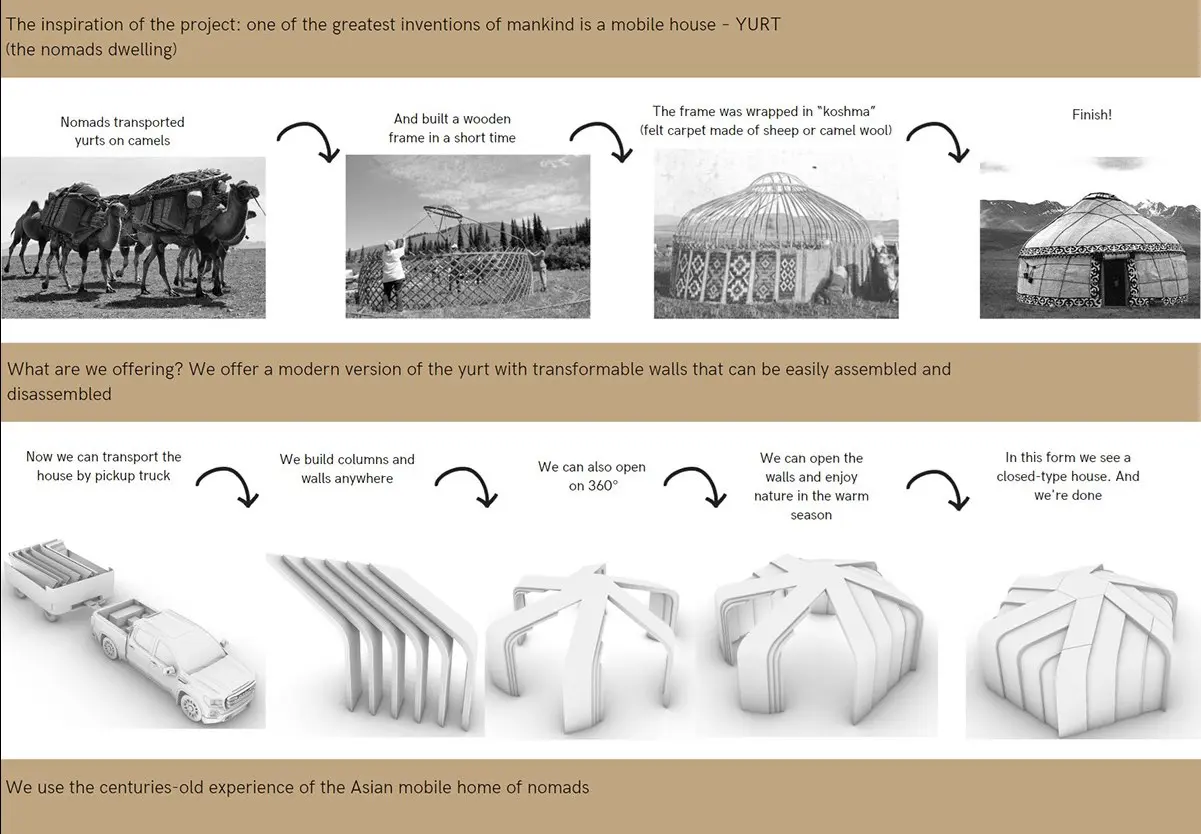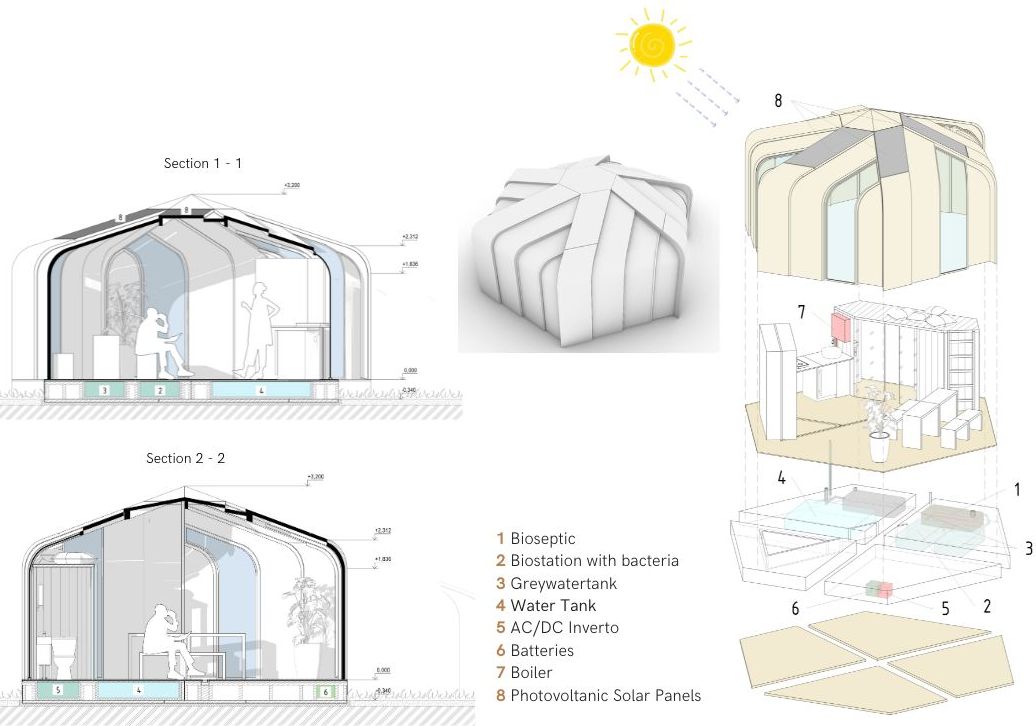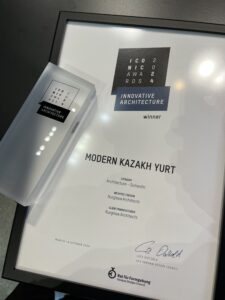ASTANA – Kazakh architect Ravil Nurgissa has won the prestigious ICONIC AWARDS presented by the German Design Council in the Innovative Architecture category for his modern take on the traditional yurt. His award-winning design reimagines the yurt, used by nomads for centuries, into a more contemporary, sustainable structure that maintains its ease of assembly, transportability, and sliding walls.

Innovative yurt design by Ravil Nurgissa won ICONIC AWARD in the Innovative Architecture category. Photo credit: Nurgissa’s personal archieve
In an interview with The Astana Times, Nurgissa shared the inspiration behind his project, key features of the design, and his vision for the future.
“I never had to think much about what I wanted to do in life; I always knew I would become an architect,” recalled Nurgissa.
He began his studies at the College of the Kazakh State Academy of Architecture and Construction (KazGASA) in 2012 and went on to complete his degree at the academy.

Photo credit: Nurgissa’s personal archieve
As he began his career, Nurgissa became fascinated with the idea of giving the traditional yurt a contemporary twist.
“I searched online for examples of modern yurt designs, but nothing matched the vision I had in mind,” he said. “While many architects considered similar concepts, none had truly executed them. I started thinking about how to modernize the yurt while preserving its traditional essence.”
After several 3D design attempts, Nurgissa created a structure that seamlessly integrates modern technology with the yurt’s iconic form.

The project incorporates modern technologies such as a water purification system, bio-septic tank, and a water heater, with electricity powered by solar panels. Photo credit: Nurgissa’s personal archieve
“One of the standout features is the incorporation of solar panels directly into the yurt’s structure, allowing it to generate energy for household needs. The design also includes a rainwater collection system for toilet use and a bio-waste recycling feature for additional energy production,” said Nurgissa.
Another key innovation of the project is elevating the yurt on stilts, which allows grass to continue growing beneath it.
“The frame is crafted from natural wood, and every decision was made to emphasize our respect for the environment, even in the smallest details,” he said.
The ICONIC AWARDS are among the most respected in the architecture industry. This year, the jury reviewed 540 entries from 36 countries, selecting 55 projects.

Photo credit: Nurgissa’s personal archieve
Nurgisa believes his work captured attention for its harmonious blend of tradition and modernity, as well as its innovative approach and cultural significance.
“My project was the smallest among the winners and has not been implemented yet. The other winning projects were large business centers, libraries, hotels, and schools,” he said. “The combination of traditional and modern functionality, along with the contrast in appearance, is what I believe caught the jury’s attention”.
Nurgissa emphasized that the international recognition is more than just an award—it is a beacon signaling that he is on the right path.
“This award is like a guidepost, pushing me forward. There is no time to relax. I have many ideas, but I prefer to design first and then talk about them—otherwise, the meaning and interest are lost. To implement projects, we need investments and clients who value art,” said Nurgissa.
The award ceremony took place on Oct.8 at BMW Welt in Munich, bringing together architects, interior designers, and graphic artists worldwide, including from Germany, Denmark, South Korea, Japan, China, and Mexico.


